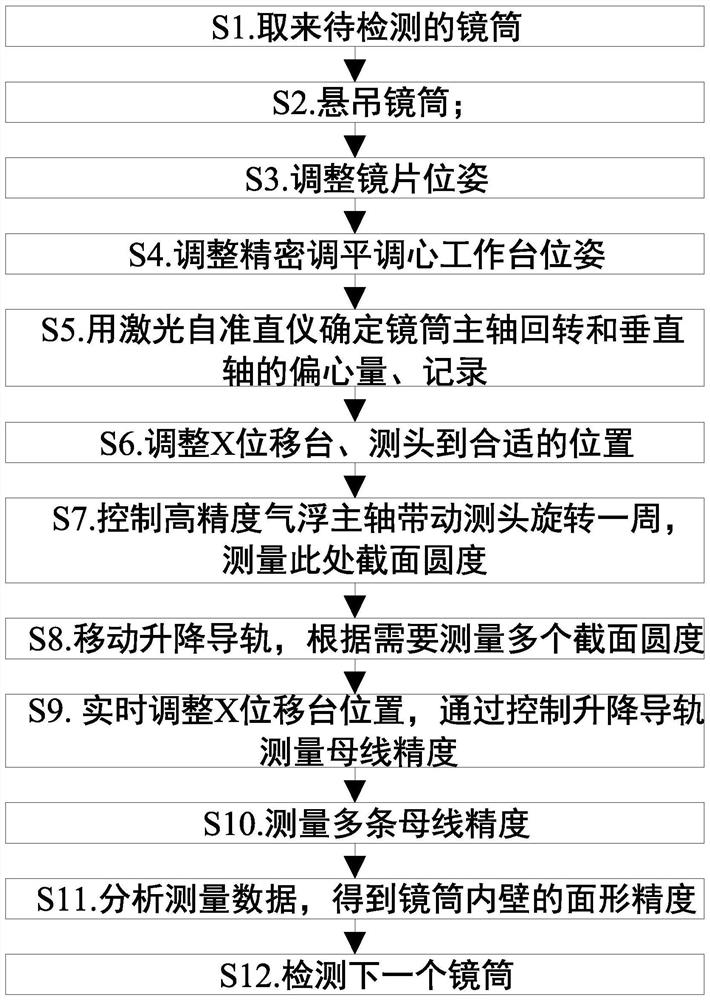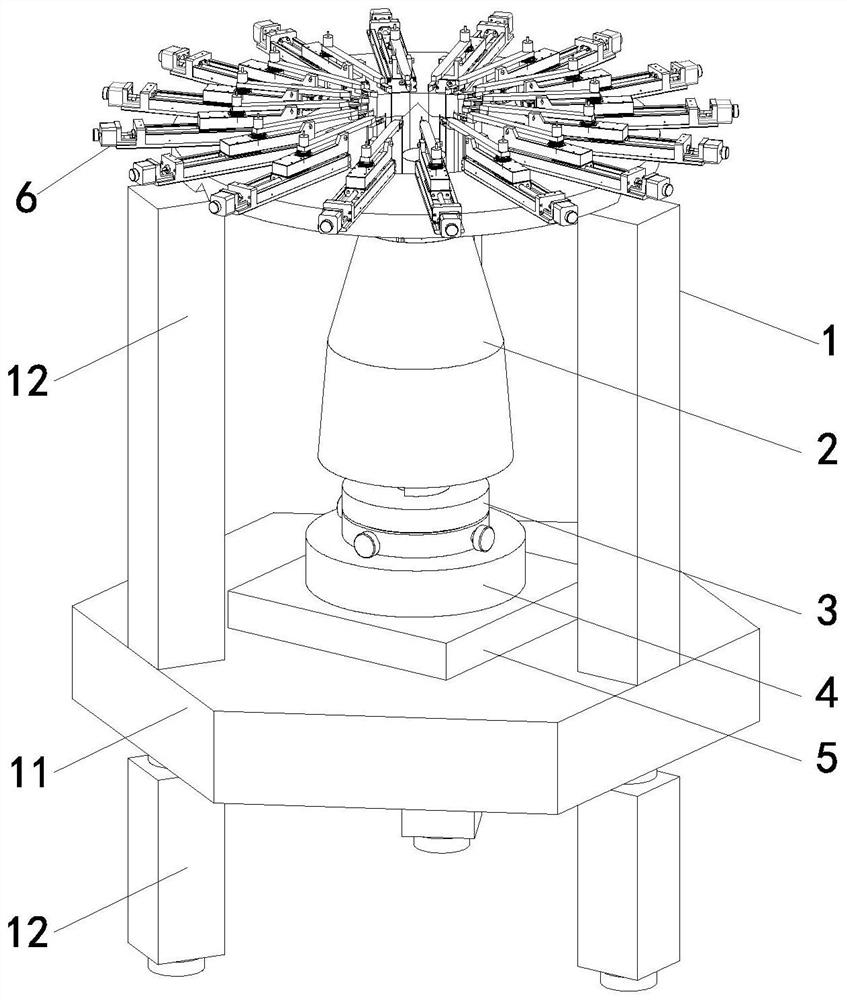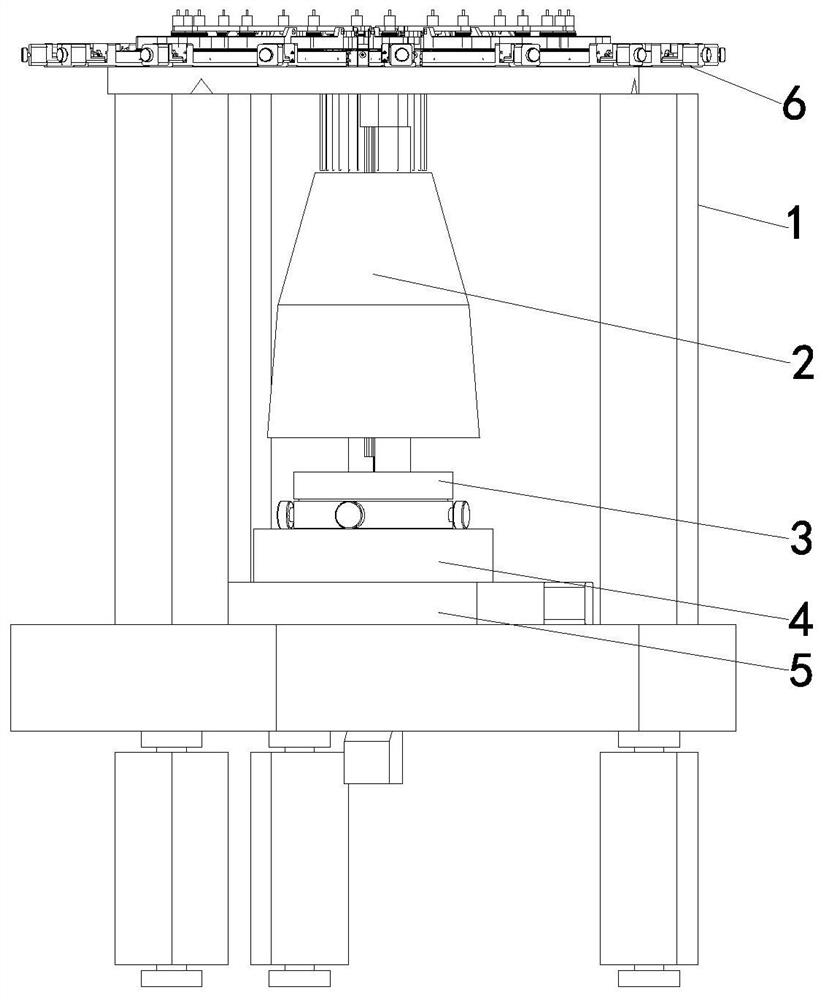High-precision detection method for inner wall of WolterI type X-ray focus lens
A detection method and high-precision technology, which is applied to measuring devices, instruments, and optical devices, can solve problems such as low efficiency, easy deformation, and poor precision, and achieve the effects of improving detection efficiency, ensuring low deformation, and high precision
- Summary
- Abstract
- Description
- Claims
- Application Information
AI Technical Summary
Problems solved by technology
Method used
Image
Examples
Embodiment Construction
[0030] refer to figure 1 As shown, the high-precision detection method for the inner wall of the WolterI type X-ray focusing mirror comprises the following steps:
[0031] S1. Fetch the lens barrel 2 to be detected;
[0032] S2. suspending the lens barrel 2; realized by the active hoisting device 6 of the detection device;
[0033] S3. Adjusting the lens position and posture: adjusted by the active hoisting device 6 passing through the detection device;
[0034] S4. Adjust the 34 position and posture of the precision leveling and centering workbench: it is adjusted by the XY translation platform 5 passing through the detection device;
[0035] S5. Turn off all light sources in the detection room, and use the laser autocollimator 312 to determine the eccentricity and record of the rotation of the main axis of the lens barrel 2 and the vertical axis;
[0036] S6. Adjust the X displacement stage 324, the long-distance interferometric probe 321 and the focusing short-distance i...
PUM
 Login to View More
Login to View More Abstract
Description
Claims
Application Information
 Login to View More
Login to View More - R&D
- Intellectual Property
- Life Sciences
- Materials
- Tech Scout
- Unparalleled Data Quality
- Higher Quality Content
- 60% Fewer Hallucinations
Browse by: Latest US Patents, China's latest patents, Technical Efficacy Thesaurus, Application Domain, Technology Topic, Popular Technical Reports.
© 2025 PatSnap. All rights reserved.Legal|Privacy policy|Modern Slavery Act Transparency Statement|Sitemap|About US| Contact US: help@patsnap.com



